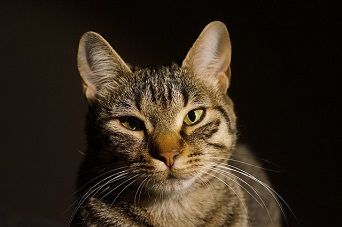Feline Influenza A Outbreak in New York
A 3-month outbreak of feline influenza A affected hundreds of shelter cats and a veterinarian in New York City, posing a public health risk.

From December 2016 to February 2017 in New York City, feline influenza A(H7N2) infected approximately 500 shelter cats and a veterinarian who treated 1 of the infected cats. The outbreak caused mild, self-limiting respiratory illness and highlighted a potential public health risk.
Influenza A virus outbreaks are rare in dogs and cats, with the last reported feline influenza A outbreak occurring in 2009 in Italy. Cats are not major reservoirs for this virus in nature.
Authors of an Emerging Infectious Diseases report on the New York City outbreak collected samples from several of the symptomatic cats and performed in vitro and in vivo experiments to characterize feline influenza A(H7N2). This influenza subtype was tested alongside chicken influenza A(H7N2).
RELATED:
- Purdue: Avian Flu - Public Health Readiness and Response
- Canine Influenza A Virus Outbreak in the United States
Feline Influenza A(H7N2) Characteristics
Genetics and Phylogeny
The feline H7N2 subtype is genetically similar to the chicken H7N2 subtype, which was detected in New York in 1999; this finding indicates the feline subtype’s likely derivation from an avian influenza. The feline subtype also lacks the proteins conferring resistance to neuraminidase and ion channel inhibitors and does not have amino acid changes allowing for adaptation and pathogenicity in mammals. In addition, changes in the hemagglutinin protein in feline H7N2 suggest low pathogenicity in chickens.
Replication and Pathogenicity
Compared with chicken H7N2, feline H7N2 demonstrated slower or less efficient replication in several cultured cell types. For in vivo testing, authors intranasally infected ferrets, mice, and specific-pathogen-free (SPF) cats with both viruses. Unlike chicken H7N2, feline H7N2 did not cause illness or weight loss in ferrets and mice. Both viruses replicated efficiently in the respiratory tract of the ferrets and mice, with feline H7N2 replicating efficiently in the nasal turbinates.
Neither virus caused weight loss in the SPF cats. Notably, feline H7N2 replicated efficiently and was detected in the nasal turbinates, trachea, and lungs of the cats, indicating efficient viral replication in the upper and lower respiratory tracts of cats.
On histopathology, authors observed lesions in the nasal turbinates, trachea, and lungs of the SPF cats infected with feline H7N2. Lesions included:
- Tracheal wall inflammation
- Foamy macrophages in the bronchiolar lamina
- Exudate with degenerating and necrotic neutrophils in the nasal cavities
Viral Transmission
During the outbreak, feline H7N2 rapidly infected several hundred shelter cats and 1 treating veterinarian, indicating viral transmission among mammals. To test this transmissibility, authors intranasally infected healthy ferrets and cats with either the feline or chicken H7N2 subtype, then respectively placed a naïve ferret or cat in the same cage as the infected animal (direct contact transmission) or a nearby cage (airborne transmission). Nasal wash samples were collected.
Infected and exposed cats seroconverted and secreted feline H7N2, indicating that feline H7N2 can spread via direct or airborne transmission.
Receptor Binding
Glycan array analysis, which evaluates binding specificity to glycans, demonstrated that feline H7N2 binds strongly to α2,3-linked sialosides (avian-type receptors) and weakly to α2,6-linked sialosides (human-type receptors).
Sensitivity to Neuraminidase Inhibitors
Feline H7N2 exhibited sensitivity to several neuraminidase inhibitors, explained by the subtype’s absence of HA proteins conferring neuraminidase inhibitor resistance.
Bringing It Together
The characteristics of feline influenza A(H7N2) “suggest that [it] could pose a risk to human health,” the authors concluded. They recommended close monitoring of shelter animals to detect influenza virus outbreaks.
Dr. JoAnna Pendergrass received her Doctor of Veterinary Medicine degree from the Virginia-Maryland College of Veterinary Medicine. Following veterinary school, she completed a postdoctoral fellowship at Emory University’s Yerkes National Primate Research Center. Dr. Pendergrass is the founder and owner of JPen Communications, a medical communications company.